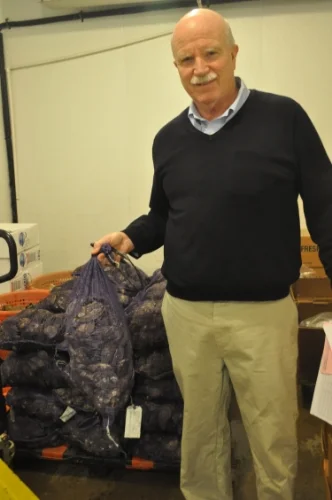For Shellfishers, A Winter For The Ages
/Alex Moschos, owner of Neraki restaurant in Huntington village, specializes in seafood. But this winter of ice and bitter cold created more challenges for him than simply shoveling his sidewalk. Frozen harbors paralyzed shellfishers, resulting in a regional shortage of clams, mussels, oysters and the like.
Moschos said hard-to-find Long Island clams came at a premium; other distributors cashed in on the northeast shortage, too.
“The prices did spike,” he said.
At Jonathan’s Ristorante on Wall Street, Executive Chef Tito Onofre said on Tuesday he got his first text message with good news from a Long Island supplier – that clams and mussels were finally available for purchase again.
A stickler for quality and consistency, Onofre said the lack of control over product is particularly challenging.
Jonathan’s offers a $1 oyster happy hour six days a week. Normally Onofre exclusively serves Blue Point oysters; this winter, he’s snapped up any supply he can get, whether from Virginia, Massachusetts, Connecticut or elsewhere.
“It’s terrible. It’s hard to work like this,” he said. “You don’t get the items that you need.”
Residents in the shellfishing business said the 2014-2015 has been one for the ages. With 40 years under his belt, Northport’s Tom Kehoe has been through quite a lot in the shellfishing business, but nothing quite like this.
“We’ve had bad winters… but we never had anything that went for so long as this and was so pervasive,” he said. Kehoe owns East Northport-based K&B Seafood, an international seafood and shellfish distributor.
Normally, a sizable portion of his bounty comes from the northeastern shores of North America, including Huntington Harbor, from which he draws his exclusive Saddle Rock oysters. Little Neck Oysters are harvested from the Long Island Sound.
But with those bodies of water being frozen in, he looked south.
However, some of Kehoe’s furthest-south suppliers, located at about the halfway point of North Carolina, were also “frozen” until just this week. In his Northport headquarters, the first shipments of oysters from Connecticut and Virginia, as well as Oyster Bay clams, had just started to arrive this week. Outside of one shell fisherman in Connecticut who could get out of the ice, the first shipments in about a month.
“Traditionally, when we would get cold-cold winters, we were always able to buy south of us,” he said, citing shellfishing hubs in the Chesapeake area and into the Carolinas. “This year, that all closed up because they got frozen in, too.”
The deep freeze was attributed to what has been determined by meteorologists as the fourth-coldest February New York has experienced in a century and a half. Boston took the initial body-blow and some of the heaviest snowfalls and accumulation ever recorded in the region. As the snow piled up here, the frigid cold wasn’t far behind.
“Pretty much, we’re not working,” Northport Mayor George Doll, a lobsterman and shellfisherman by trade, said. “You couldn’t get out, first of all. Finally, the whole place from Eaton’s Neck to Lloyd’s Point was frozen, so there was no place to go.”
Some resorted to taking chainsaws with them, where they cut holes in the ice and began raking for clams – hardly optimal conditions, Doll said.
Not only is the cold tough on the body, it can freeze oysters, ruining any potential take in the frigid cold.
“When the temperature got above freezing, you could go. But you had to walk [on the frozen harbor] to where you were going,” Doll said.
While the frigid cold dried up the supply, it also sapped demand, too.
“Because it’s so cold, people weren’t going out [to restaurants],” Kehoe said.
That’s bad news for Kehoe – his business supplies restaurants, hotels and country clubs in New York City and Long Island with seafood. Tapping into the region’s strengths, shellfish, namely oysters – some of them drawn from Huntington Harbor – are his specialty.
But some of those gems were frozen in the harbor, unable to be harvested.
In the meantime, Kehoe pivoted to the west coast for oysters, tapping into Washington state, Vancouver and Baja, Mexico suppliers. Frozen mussels came from Chile, and “you just did without clams for a while, that’s all.”
“You always have fish you can get your hands on, but the local northeast shellfish wasn’t available at any price,” Kehoe said.
Kehoe said prices typically increased by about 50 percent during the deep freeze. That price spike was tempered by the nature of the business, in which long-term supply relationships tend to be the norm. So, even though restaurants were “very anxious” to get their hands on product, there was less incentive to send prices sky-high.
“There’s a balance,” he said.
But with temperatures on the rise again, Kehoe said relief is coming soon – he expects shellfishing to begin again in earnest in a matter of days.








